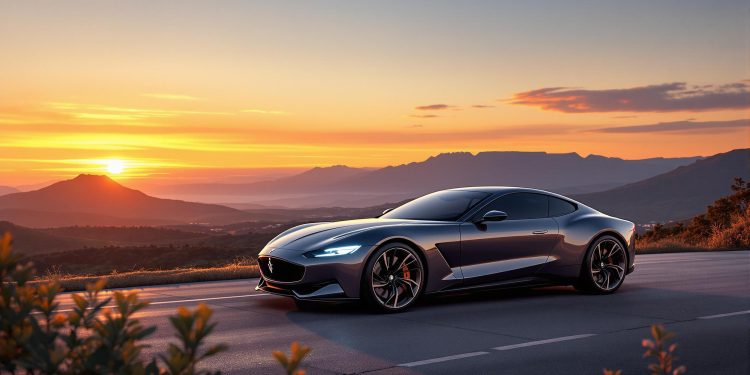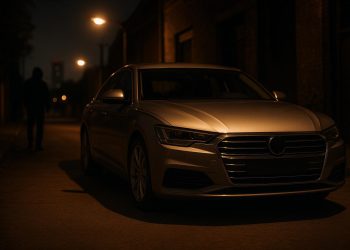- Revenue Forecast: Market revenue in 2025 is expected to reach US$64 million.
- Price Increases: Entry-level luxury cars may rise by 13.3%, while high-end models could see up to 25% increases.
- Consumer Shifts: Growing interest in pre-owned vehicles, electric models, and SUVs (50% market share expected).
- Economic Factors: A 1.7% GDP growth, a stronger rand, and eased interest rates may stabilize the market.
- Challenges: A 148% price increase since 2014 has widened the affordability gap, pushing buyers toward pre-owned cars and mainstream brands.
Key Trends:
- Electric Vehicles (EVs): Gaining traction with improved charging infrastructure.
- Digital Sales: Online platforms are transforming how luxury cars are bought.
- SUV Dominance: SUVs are the most preferred luxury segment.
Quick Summary Table:
| Segment | Price Range (ZAR) | Popular Models | Market Share |
|---|---|---|---|
| Entry-level Luxury | 750,000 – 1,200,000 | BMW 3-Series, Mercedes C-Class | Increasing Demand |
| Mid-range Luxury | 1,200,000 – 2,500,000 | BMW 5-Series, Audi A6 | Stable |
| High-end Luxury | 2,500,000+ | Mercedes S-Class, BMW 7-Series | Smaller Segment |
| SUVs | Varies | Various | 50% of Sales |
| Electric Vehicles | Higher Prices | Emerging Models | 10-15% Share |
Takeaway: The market is adapting to affordability challenges, rising EV adoption, and digital transformation. Buyers should consider pre-owned options or entry-level models before prices climb further.
Current Luxury Car Market in South Africa
Market Size and Trends
South Africa’s luxury car market is expected to generate US$64 million in revenue by 2025 [1]. However, the market is experiencing mixed trends. Sales of premium vehicles have dropped significantly – down 64% since 2014, with 26,202 units sold in 2023 compared to 71,889 in 2014 [2]. At the same time, brands like Suzuki and Haval from Asia are gaining traction, and the pre-owned car market is thriving [3]. Even with a projected GDP growth of 1.7% [6], affordability remains a major hurdle, pushing buyers toward more economical options.
These financial pressures are shaping the landscape of luxury car offerings in South Africa.
Top Brands and Models
German automakers continue to dominate the luxury segment in South Africa. Here’s a snapshot of the leading brands and their standout models:
| Brand | Notable Models | Market Position |
|---|---|---|
| Mercedes-Benz | S-Class | Leader in Premium Segment |
| BMW | 7 Series | Strong Competitor |
| Audi | A8 | Key Premium Rival |
| Porsche | Panamera | Positioned in Ultra-Luxury |
Current Price Ranges
The cost of luxury cars has skyrocketed over the years. For instance, the entry-level BMW 3-series has seen its price jump 148% – from R341,000 in 2014 to R846,000 in 2023. In contrast, take-home pay has only grown 32% during the same period, from R11,641 to R15,409 [2]. Luxury car prices typically start at US$75,000 and go higher [4].
This growing gap between vehicle prices and income levels is driving several shifts in the market:
- A surge in pre-owned car sales
- Rising interest in hybrid and electric models, supported by improved charging infrastructure
- Increased adoption of online car sales
- A shift from premium luxury brands to more mainstream options
These trends are expected to continue influencing the market as it evolves toward 2025.
Factors Affecting 2025 Price Forecast
Economic Factors
South Africa’s luxury car market is heavily influenced by the performance of the rand against major currencies like the US dollar and euro. Since 2014, prices have surged by 148%, largely driven by currency fluctuations that directly affect import costs for luxury vehicles. GDP growth projections also play a role in shaping the market’s outlook.
Regulations and Policies
Government policies and regulations are key drivers of luxury car pricing. Here’s a snapshot of their current and future impact:
| Policy Type | Current Impact | 2025 Outlook |
|---|---|---|
| Ad Valorem Tax | Tax based on vehicle value | Possible hikes could push prices higher |
| Import Duties | Influences the cost of imports | Changes in trade agreements could alter rates |
| Emissions Standards | Minimal impact currently | Stricter rules likely to raise compliance costs |
Technology and Innovation
Advancements in technology are reshaping the luxury car market and influencing prices. The government’s push for fast electric car charging infrastructure [4] is accelerating the shift toward electric vehicles (EVs), bringing new costs and opportunities.
Key Features Driving Costs:
- Advanced driver-assistance systems (ADAS)
- Electric powertrains
- Connected vehicle technology
The luxury EV market is projected to grow at a CAGR of 3.38% between 2025 and 2029 [1]. These technological shifts are closely tied to changing consumer priorities, as detailed below.
Consumer Trends and Preferences
Shifting consumer preferences are shaping pricing strategies for 2025:
- Eco-Conscious Choices: More buyers are opting for sustainable luxury vehicles [1].
- SUV Popularity: Luxury SUVs are becoming the go-to choice in the African market [5].
- Online Sales Growth: Digital platforms are playing a bigger role in how people buy cars [4].
2025 Price Forecast Details
Forecasted Price Ranges
Price adjustments in 2025 will vary across segments, influenced by consumer preferences and investments in new technologies:
| Segment | Price Range (ZAR) | Popular Models |
|---|---|---|
| Entry-level Luxury | 750,000 – 1,200,000 | BMW 3-Series, Mercedes C-Class |
| Mid-range Luxury | 1,200,000 – 2,500,000 | BMW 5-Series, Audi A6 |
| High-end Luxury | 2,500,000+ | Mercedes S-Class, BMW 7-Series |
Entry-level models, such as the BMW 3-Series, are driving demand, with a 35% increase in enquiries [6].
Anticipated Price Changes
Price increases are influenced by economic conditions and regulatory updates, with varying effects across segments:
- Entry-level prices are expected to rise by 13.3%, while high-end models could see increases of up to 25%.
- Electric luxury vehicles (EVs) will remain priced higher due to their advanced features and technology.
- Broader market adjustments reflect economic trends and consumer behavior.
Impact on Market Share and Sales
Market trends suggest SUVs will dominate luxury sales, accounting for 50% of the market, while EVs are expected to secure a 10-15% share. This pricing shift aligns with growing interest in pre-owned luxury cars, with used vehicle enquiries rising 12% year-on-year in early 2025 [6]. Total luxury car retail sales are projected to hit ZAR50.6 billion by 2028 [4].
| Market Segment | Projected Impact |
|---|---|
| Premium SUVs | Expected to capture 50% of sales |
| Electric Vehicles | Projected 10-15% market share |
| Ultra-luxury | Stable sales |
sbb-itb-09752ea
Related video from YouTube
Stakeholder Impacts
The recent pricing trends have varying effects on three primary groups: manufacturers, buyers, and dealerships.
Opportunities for Car Makers
With SUVs expected to capture 50% of the market, manufacturers have several areas to focus on:
| Focus Area | Key Actions | Anticipated Results |
|---|---|---|
| Electric Vehicles | Invest in infrastructure | Targeting 15-20% EV adoption by 2026 [4] |
| Local Production | Optimize production costs | Lower import duties |
| Digital Sales | Expand online platforms | Increase in digital purchase rates [4] |
| SUV Segment | Broaden model offerings | Strengthen market dominance |
Advice for Buyers and Investors
As luxury car prices climb, buyers should pay attention to economic trends and consider pre-owned options before anticipated price increases in Q2. The pre-owned market is growing, with inquiries up 12% year-on-year in early 2025 [6].
Key Investment Areas:
- Electric luxury cars, particularly as charging infrastructure expands [4].
- SUV models, which continue to see strong demand.
- Brands that have established local production to manage costs effectively.
Strategies for Dealerships
With used car inquiries growing by 12%, dealerships need to adjust their strategies to align with evolving market conditions. The shift toward digital sales channels [4] highlights the importance of creating a strong online presence while maintaining excellent in-person service.
Focus Areas for Dealerships:
- Digital Integration: Use virtual showrooms, online configurators, and well-planned digital marketing to attract customers.
- Service Excellence: Develop specialized EV maintenance programs, enhance retail experiences, and strengthen after-sales support.
- Financial Options: Offer tailored payment plans and invest in robust pre-owned luxury car programs to meet diverse customer needs.
Conclusion
South Africa’s luxury car market in 2025 is navigating a complex mix of opportunities and challenges. While revenue growth is on the horizon, affordability issues have led to a sharp 64% decline in premium brand sales since 2014 [2]. These trends highlight a shift in how South Africans approach luxury vehicle ownership.
Key trends shaping the market include:
- Rising demand for pre-owned luxury vehicles
- Increased interest in hybrid and electric cars
- Growing reliance on digital platforms for car purchases
- A noticeable move from premium to more accessible brands
With interest rates stabilizing and the economy projected to grow by 1.7% in 2025 [6], the market may slowly recover. However, manufacturers and dealerships will need to align their strategies with these changing dynamics to stay competitive.
The future of this market depends on tackling three critical challenges: bridging affordability gaps through pre-owned options, driving electric vehicle adoption by investing in infrastructure, and adjusting pricing strategies to reflect economic realities. How well these factors are managed, alongside improving economic conditions, will shape the direction of South Africa’s luxury car market.
FAQs
What is the luxury vehicle tax in South Africa?
In 2025, South Africa applies a 5.25% tax on cars priced above R250,000, increasing to 30% for vehicles over R1 million. This tax structure has contributed to a 148% price increase since 2014 and affects most entry-level luxury cars starting at R750,000 [2].
Are there any tax exemptions for luxury vehicles?
Exemptions are limited to commercial or transit vehicles. While there have been discussions about revising the tax structure for different vehicle categories, no updates have been implemented as of 2025 [1][3].
What strategies can buyers use to manage luxury vehicle costs?
Experts suggest a few ways to handle the high costs in the luxury vehicle market:
| Strategy | Advantage |
|---|---|
| Choose pre-owned or entry-level models below tax thresholds | Reduce overall tax costs |
| Consider leasing options | Offers better financial terms and fits with the rise of digital sales |
| Wait for future incentives | Potential savings as the market adapts |
How does South Africa’s tax system compare to other markets?
South Africa’s progressive luxury vehicle tax, ranging from 5.25% to 30%, significantly impacts pricing, especially in the premium segment. This stands out when compared to similar emerging markets [2][3].
What documentation is required for luxury vehicle tax compliance?
To comply with luxury vehicle tax regulations, buyers need to provide:
- Proof of the vehicle’s value and specifications
- Import documentation for imported cars
- Tax clearance certificates
- Registration documents
These documents ensure accurate tax calculation and adherence to South African revenue laws [1][2].
Related Blog Posts
- Factors That Influence Used Car Prices in South Africa
- Used Cars vs New Cars: Cost Breakdown
- Top 5 Cars for South African Roads
- SA EV Sales Growth 2025: Key Numbers





